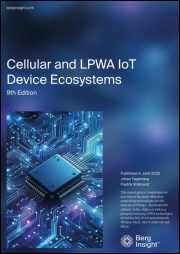
|
시장보고서
상품코드
1593002
세계의 사물인터넷 기기 관리 시장 : 카테고리별, 조직 규모별, 업종별 예측(2025-2030년)Internet of Things Device Management Market by Category (Services, Solution), Organization Size (Large Enterprises, Small & Medium Enterprises (SMEs)), Vertical - Global Forecast 2025-2030 |
||||||
사물인터넷 기기 관리 시장의 2023년 시장 규모는 36억 8,000만 달러로 평가되었습니다. 2024년에는 46억 7,000만 달러에 이를 것으로 예측되며, 복합 연간 성장률(CAGR) 27.67%로 성장하며, 2030년에는 203억 9,000만 달러에 도달할 것으로 예상됩니다.
사물인터넷(IoT) 기기 관리 범위에는 IoT 인프라에서 연결 기기 관리, 모니터링, 프로비저닝, 구성 및 유지보수가 포함됩니다. 에 의해 수집된 데이터의 관리가 포함됩니다.의 폭발적인 증가에 의해 강조되고 있으며, 원활한 운영, 보안 및 상호 운용성을 보장하기 위해 효율적인 관리 프로토콜이 필요합니다. 등 수많은 분야에 퍼져 있으며, 기기 관리는 업무 효율성과 혁신에 필수적입니다. 범위에는 IoT를 활용하여 비즈니스 인사이트을 얻는 기업, 관리 솔루션을 제공하는 서비스 제공 업체, 장치의 향상된 기능을 활용하는 소비자 등이 포함됩니다.에는 커넥티드 기술의 진보, 스마트 인프라의 상승, IoT 에코시스템에 대한 투자 확대 등이 있습니다. AI 기반의 예측 관리 도구 개발, 보안 프레임워크 강화, 보안 디바이스 상호작용을 위한 블록체인 통합에 있습니다. 종합적인 관리 솔루션 개발에 주력하고 새로운 기술의 진보를 통합해야합니다.그러나 시장 성장은 높은 도입 비용, 보안 취약성, 데이터 프라이버시 및 상호 운용성 기준에 대한 우려와 같은 과제로 인해 막혔습니다. AI 주도 분석, 강력한 엔드 투 엔드 보안 솔루션 개발, 디바이스 통합 및 제어를 간소화하는 사용자 친화적 인 관리 플랫폼 웜의 구축이 포함됩니다. 시장의 성격은 역동적이고 급속하게 진화하고 있으며, 기술의 진보와 커넥티드 솔루션에 대한 수요 증가가 그 원동력이 되고 있습니다. 연구 개발에 투자하고 완벽한 장치 통합 및 관리를 제공하는 최첨단 도구를 혁신하는 한편, 진화하는 보안 표준 및 규정 준수 요구 사항에 주의를 기울여야 합니다.
| 주요 시장 통계 | |
|---|---|
| 기준년(2023) | 36억 8,000만 달러 |
| 예측년(2024) | 46억 7,000만 달러 |
| 예측년(2030) | 203억 9,000만 달러 |
| 복합 연간 성장률(CAGR)(%) | 27.67% |
시장 역학 : 빠르게 진화하는 사물인터넷 기기 관리 시장의 주요 시장 인사이트 공개
사물인터넷장치관리시장은 수요 및 공급의 역동적인 상호작용에 의해 변모를 이루고 있습니다. 정밀화 및 새로운 비즈니스 기회 획득에 대비 이러한 동향을 종합적으로 파악함으로써 기업은 정치적, 지리적, 기술적, 사회적, 경제적 영역에 걸친 다양한 리스크를 완화할 수 있음과 동시에 소비자 행동 그리고 그것이 제조 비용과 구매 동향에 미치는 영향을보다 명확하게 이해할 수 있습니다.
- 시장 성장 촉진요인
- 스마트 홈 오토메이션에서의 IoT 디바이스 수요 증가
- 다양한 산업에서의 커넥티드 디바이스의 보급 확대
- 정부의 스마트시티 구상과 IoT에 대한 투자
- 시장 성장 억제요인
- 엣지 컴퓨팅의 복잡성과 숙련된 전문가의 부족
- 시장 기회
- 제조업체에 의한 신제품의 인트로덕션과 개발
- 5g 네트워크의 전개와 IoT 기기에의 첨단 기능의 통합
- 시장의 과제
- 대량의 기기 보안 관리에 대한 우려
Porter's Five Forces : 사물인터넷 기기 관리 시장을 탐색하는 전략 도구
Porter's Five Forces Framework는 시장 상황 경쟁 구도를 파악하기 위한 중요한 도구입니다. Porter's Five Forces Framework는 기업의 경쟁을 평가하고 전략적 기회를 탐구하는 명확한 기술을 설명합니다. 이 프레임워크는 기업이 시장 내 세력도를 평가하고 신규 사업의 수익성을 결정하는 데 도움이 됩니다. 더 강인한 시장에서 포지셔닝을 보장 할 수 있습니다.
PESTLE 분석 : 사물인터넷 기기 관리 시장에서 외부 영향을 파악
외부 거시 환경 요인은 사물인터넷 기기 관리 시장의 성과 역학을 형성하는데 매우 중요한 역할을 합니다. 정치적, 경제적, 사회적, 기술적, 법적, 환경적 요인 분석은 이러한 영향을 탐색하는 데 필요한 정보를 제공합니다. PESTLE 요인을 조사함으로써 기업은 잠재적인 위험과 기회를 더 잘 이해할 수 있습니다. 이 분석을 통해 기업은 규제, 소비자 선호, 경제 동향의 변화를 예측하고 앞으로 예상되는 적극적인 의사 결정을 할 준비를 할 수 있습니다.
시장 점유율 분석 사물인터넷 기기 관리 시장 경쟁 구도 파악
사물인터넷 기기 관리 시장의 상세한 시장 점유율 분석을 통해 공급업체의 성과를 종합적으로 평가할 수 있습니다. 이를 통해 시장의 집중, 단편화, 통합 동향을 밝혀내고, 벤더는 경쟁이 격화하는 가운데 자신의 지위를 높이는 전략적 의사결정을 하기 위해서 필요한 지식을 얻을 수 있습니다.
FPNV 포지셔닝 매트릭스 제품의 인터넷 장치 관리 시장에서 공급업체의 성능 평가
FPNV 포지셔닝 매트릭스는 사물인터넷 기기 관리 시장에서 벤더를 평가하는 중요한 도구입니다. 정보를 기반으로 의사 결정을 내릴 수 있습니다. 이 행렬을 통해 비즈니스 조직은 공급업체의 비즈니스 전략과 제품 만족도를 기준으로 평가하여 목표에 맞는 충분한 정보를 바탕으로 의사 결정을 내릴 수 있습니다. 4개의 사분면을 통해 벤더를 명확하고 정확하게 부문화하고 전략 목표에 가장 적합한 파트너 및 솔루션을 파악할 수 있습니다.
전략 분석 및 추천 사물의 인터넷 장치 관리 시장에서 성공에 대한 길을 그리기
사물인터넷 기기 관리 시장의 전략 분석은 시장에서의 프레즌스 강화를 목표로 하는 기업에 필수적인 요소입니다. 이 방법을 사용하면 경쟁 구도에서 어려움을 극복하고 새로운 비즈니스 기회를 활용하여 장기적인 성공을 거둘 수 있습니다.
이 보고서는 주요 관심 분야를 포괄하는 시장의 종합적인 분석을 제공합니다.
1. 시장 침투 : 현재 시장 환경의 상세한 검토, 주요 기업의 광범위한 데이터, 시장 도달범위 및 전반적인 영향력 평가.
2. 시장 개척도 : 신흥 시장의 성장 기회를 파악하고 기존 분야의 확장 가능성을 평가하며 미래 성장을 위한 전략적 로드맵을 제공합니다.
3. 시장 다양화 : 최근 제품 출시, 미개척 지역, 업계의 주요 진보, 시장을 형성하는 전략적 투자를 분석합니다.
4. 경쟁 평가 및 정보 : 경쟁 구도를 철저히 분석하여 시장 점유율, 사업 전략, 제품 포트폴리오, 인증, 규제 당국 승인, 특허 동향, 주요 기업의 기술 진보 등을 검증합니다.
5. 제품 개발 및 혁신 : 미래 시장 성장을 가속할 것으로 예상되는 최첨단 기술, R&D 활동, 제품 혁신을 강조합니다.
또한 이해관계자가 충분한 정보를 얻고 의사결정을 할 수 있도록 중요한 질문에 대답하고 있습니다.
1. 현재 시장 규모와 향후 성장 예측은?
2. 최고의 투자 기회를 제공하는 제품, 부문 및 지역은 어디입니까?
3. 시장을 형성하는 주요 기술 동향과 규제의 영향은?
4. 주요 벤더의 시장 점유율과 경쟁 포지션은?
5. 벤더 시장 진입, 철수 전략의 원동력이 되는 수익원과 전략적 기회는 무엇인가?
목차
제1장 서문
제2장 조사 방법
제3장 주요 요약
제4장 시장 개요
제5장 시장 인사이트
- 시장 역학
- 성장 촉진요인
- 스마트 홈 오토메이션에서의 IoT 디바이스 수요 증가
- 다양한 업계에서 접속 디바이스의 보급이 진행되는
- 정부의 스마트 시티 노력과 IoT 투자
- 억제요인
- 엣지 컴퓨팅의 복잡성과 숙련된 전문가의 부족
- 기회
- 제조업체에 의한 신제품의 인트로덕션과 개발
- 5G 네트워크의 배포와 IoT 디바이스에의 첨단 기능의 통합
- 과제
- 다수의 디바이스의 보안 관리에 대한 우려
- 성장 촉진요인
- 시장 세분화 분석
- Porter's Five Forces 분석
- PESTEL 분석
- 정치적
- 경제
- 사교
- 기술적
- 법률상
- 환경
제6장 사물인터넷 기기 관리 시장 : 카테고리별
- 서비스
- 매니지드 서비스
- 전문 서비스
- 솔루션
- 데이터 관리
- 실시간 스트리밍 분석
- 보안 솔루션
제7장 사물인터넷 기기 관리 시장 : 조직 규모별
- 대기업
- 중소기업
제8장 사물인터넷 기기 관리 시장 : 업계별
- 헬스케어
- 제조업
- 소매
- 교통기관
- 유틸리티
제9장 아메리카의 사물인터넷 기기 관리 시장
- 아르헨티나
- 브라질
- 캐나다
- 멕시코
- 미국
제10장 아시아태평양의 사물인터넷 기기 관리 시장
- 호주
- 중국
- 인도
- 인도네시아
- 일본
- 말레이시아
- 필리핀
- 싱가포르
- 한국
- 대만
- 태국
- 베트남
제11장 유럽, 중동 및 아프리카의 사물인터넷 기기 관리 시장
- 덴마크
- 이집트
- 핀란드
- 프랑스
- 독일
- 이스라엘
- 이탈리아
- 네덜란드
- 나이지리아
- 노르웨이
- 폴란드
- 카타르
- 러시아
- 사우디아라비아
- 남아프리카
- 스페인
- 스웨덴
- 스위스
- 터키
- 아랍에미리트(UAE)
- 영국
제12장 경쟁 구도
- 시장 점유율 분석(2023년)
- FPNV 포지셔닝 매트릭스(2023년)
- 경쟁 시나리오 분석
- 전략 분석과 제안
기업 목록
- Advantech Co. Ltd.
- Aeris Communication, Inc.
- Amplia Soluciones SL
- ARM Holdings
- Bosch Software Innovations GmbH
- Cisco Systems, Inc.
- Cumulocity GmbH by Software AG
- Dell Technologies Inc.
- Fujitsu Limited
- Google LLC
- Hewlett Packard Enterprise Development LP
- Hitachi, Ltd.
- Honeywell International Inc.
- Huawei Technologies Co. Ltd.
- Intel Corporation
- International Business Machines Corporation
- Microsoft Corporation
- Nokia Corporation
- Oracle Corporation
- PTC Inc.
- SAP SE
- Schneider Electric SE
- Siemens AG
- Smith Micro Software, Inc.
- Telit Communications PLC
- Zipit Wireless, Inc.
The Internet of Things Device Management Market was valued at USD 3.68 billion in 2023, expected to reach USD 4.67 billion in 2024, and is projected to grow at a CAGR of 27.67%, to USD 20.39 billion by 2030.
The scope of Internet of Things (IoT) Device Management encompasses the administration, monitoring, provisioning, configuring, and maintenance of connected devices within an IoT infrastructure. This involves ensuring device security, firmware updates, and the management of data collected by these devices. Its necessity is underscored by the explosive growth in IoT devices across various industries, necessitating efficient management protocols to ensure seamless operation, security, and interoperability. Applications stretch across numerous sectors, including healthcare, automotive, smart cities, and industrial automation, where device management is critical for operational efficiency and innovation. The end-use scope includes enterprises leveraging IoT for operational insights, service providers offering management solutions, and consumers benefiting from enhanced device functionalities. Key growth factors influencing the market include advancements in connected technologies, the rise of smart infrastructure, and growing investments in IoT ecosystems. Emerging opportunities lie in the development of AI-based predictive management tools, enhanced security frameworks, and the integration of blockchain for secure device interactions. To capitalize on these opportunities, businesses should focus on developing comprehensive management solutions that can handle diverse device ecosystems and embrace emerging tech advancements. However, market growth is challenged by factors such as high implementation costs, security vulnerabilities, and concerns over data privacy and interoperability standards. Best areas for innovation involve AI-driven analytics for predictive device maintenance, development of robust end-to-end security solutions, and creation of user-friendly management platforms that simplify device integration and control. The nature of the market is dynamic and rapidly evolving, driven by technological advancements and increasing demand for connected solutions. To remain competitive, companies should invest in R&D to innovate cutting-edge tools that provide seamless device integration and management, while remaining vigilant regarding evolving security standards and regulatory compliance demands.
| KEY MARKET STATISTICS | |
|---|---|
| Base Year [2023] | USD 3.68 billion |
| Estimated Year [2024] | USD 4.67 billion |
| Forecast Year [2030] | USD 20.39 billion |
| CAGR (%) | 27.67% |
Market Dynamics: Unveiling Key Market Insights in the Rapidly Evolving Internet of Things Device Management Market
The Internet of Things Device Management Market is undergoing transformative changes driven by a dynamic interplay of supply and demand factors. Understanding these evolving market dynamics prepares business organizations to make informed investment decisions, refine strategic decisions, and seize new opportunities. By gaining a comprehensive view of these trends, business organizations can mitigate various risks across political, geographic, technical, social, and economic domains while also gaining a clearer understanding of consumer behavior and its impact on manufacturing costs and purchasing trends.
- Market Drivers
- Increasing demand for IoT devices in smart home automation
- Growing proliferation of connected devices across various industries
- Government smart city initiatives and investment In IoT
- Market Restraints
- Complexity of edge computing and lack of skilled professional
- Market Opportunities
- Introduction and development of new products by manufacturers
- Deployment of 5g network and integration of advancement features in IoT devices
- Market Challenges
- Concerns associated with managing the security of a large fleet of devices
Porter's Five Forces: A Strategic Tool for Navigating the Internet of Things Device Management Market
Porter's five forces framework is a critical tool for understanding the competitive landscape of the Internet of Things Device Management Market. It offers business organizations with a clear methodology for evaluating their competitive positioning and exploring strategic opportunities. This framework helps businesses assess the power dynamics within the market and determine the profitability of new ventures. With these insights, business organizations can leverage their strengths, address weaknesses, and avoid potential challenges, ensuring a more resilient market positioning.
PESTLE Analysis: Navigating External Influences in the Internet of Things Device Management Market
External macro-environmental factors play a pivotal role in shaping the performance dynamics of the Internet of Things Device Management Market. Political, Economic, Social, Technological, Legal, and Environmental factors analysis provides the necessary information to navigate these influences. By examining PESTLE factors, businesses can better understand potential risks and opportunities. This analysis enables business organizations to anticipate changes in regulations, consumer preferences, and economic trends, ensuring they are prepared to make proactive, forward-thinking decisions.
Market Share Analysis: Understanding the Competitive Landscape in the Internet of Things Device Management Market
A detailed market share analysis in the Internet of Things Device Management Market provides a comprehensive assessment of vendors' performance. Companies can identify their competitive positioning by comparing key metrics, including revenue, customer base, and growth rates. This analysis highlights market concentration, fragmentation, and trends in consolidation, offering vendors the insights required to make strategic decisions that enhance their position in an increasingly competitive landscape.
FPNV Positioning Matrix: Evaluating Vendors' Performance in the Internet of Things Device Management Market
The Forefront, Pathfinder, Niche, Vital (FPNV) Positioning Matrix is a critical tool for evaluating vendors within the Internet of Things Device Management Market. This matrix enables business organizations to make well-informed decisions that align with their goals by assessing vendors based on their business strategy and product satisfaction. The four quadrants provide a clear and precise segmentation of vendors, helping users identify the right partners and solutions that best fit their strategic objectives.
Strategy Analysis & Recommendation: Charting a Path to Success in the Internet of Things Device Management Market
A strategic analysis of the Internet of Things Device Management Market is essential for businesses looking to strengthen their global market presence. By reviewing key resources, capabilities, and performance indicators, business organizations can identify growth opportunities and work toward improvement. This approach helps businesses navigate challenges in the competitive landscape and ensures they are well-positioned to capitalize on newer opportunities and drive long-term success.
Key Company Profiles
The report delves into recent significant developments in the Internet of Things Device Management Market, highlighting leading vendors and their innovative profiles. These include Advantech Co., Ltd., Aeris Communication, Inc., Amplia Soluciones S.L., ARM Holdings, Bosch Software Innovations GmbH, Cisco Systems, Inc., Cumulocity GmbH by Software AG, Dell Technologies Inc., Fujitsu Limited, Google LLC, Hewlett Packard Enterprise Development LP, Hitachi, Ltd., Honeywell International Inc., Huawei Technologies Co., Ltd., Intel Corporation, International Business Machines Corporation, Microsoft Corporation, Nokia Corporation, Oracle Corporation, PTC Inc., SAP SE, Schneider Electric SE, Siemens AG, Smith Micro Software, Inc., Telit Communications PLC, and Zipit Wireless, Inc..
Market Segmentation & Coverage
This research report categorizes the Internet of Things Device Management Market to forecast the revenues and analyze trends in each of the following sub-markets:
- Based on Category, market is studied across Services and Solution. The Services is further studied across Managed Services and Professional Services. The Solution is further studied across Data Management, Real-time Streaming Analytics, and Security Solutions.
- Based on Organization Size, market is studied across Large Enterprises and Small & Medium Enterprises (SMEs).
- Based on Vertical, market is studied across Healthcare, Manufacturing, Retail, Transportation, and Utilities.
- Based on Region, market is studied across Americas, Asia-Pacific, and Europe, Middle East & Africa. The Americas is further studied across Argentina, Brazil, Canada, Mexico, and United States. The United States is further studied across California, Florida, Illinois, New York, Ohio, Pennsylvania, and Texas. The Asia-Pacific is further studied across Australia, China, India, Indonesia, Japan, Malaysia, Philippines, Singapore, South Korea, Taiwan, Thailand, and Vietnam. The Europe, Middle East & Africa is further studied across Denmark, Egypt, Finland, France, Germany, Israel, Italy, Netherlands, Nigeria, Norway, Poland, Qatar, Russia, Saudi Arabia, South Africa, Spain, Sweden, Switzerland, Turkey, United Arab Emirates, and United Kingdom.
The report offers a comprehensive analysis of the market, covering key focus areas:
1. Market Penetration: A detailed review of the current market environment, including extensive data from top industry players, evaluating their market reach and overall influence.
2. Market Development: Identifies growth opportunities in emerging markets and assesses expansion potential in established sectors, providing a strategic roadmap for future growth.
3. Market Diversification: Analyzes recent product launches, untapped geographic regions, major industry advancements, and strategic investments reshaping the market.
4. Competitive Assessment & Intelligence: Provides a thorough analysis of the competitive landscape, examining market share, business strategies, product portfolios, certifications, regulatory approvals, patent trends, and technological advancements of key players.
5. Product Development & Innovation: Highlights cutting-edge technologies, R&D activities, and product innovations expected to drive future market growth.
The report also answers critical questions to aid stakeholders in making informed decisions:
1. What is the current market size, and what is the forecasted growth?
2. Which products, segments, and regions offer the best investment opportunities?
3. What are the key technology trends and regulatory influences shaping the market?
4. How do leading vendors rank in terms of market share and competitive positioning?
5. What revenue sources and strategic opportunities drive vendors' market entry or exit strategies?
Table of Contents
1. Preface
- 1.1. Objectives of the Study
- 1.2. Market Segmentation & Coverage
- 1.3. Years Considered for the Study
- 1.4. Currency & Pricing
- 1.5. Language
- 1.6. Stakeholders
2. Research Methodology
- 2.1. Define: Research Objective
- 2.2. Determine: Research Design
- 2.3. Prepare: Research Instrument
- 2.4. Collect: Data Source
- 2.5. Analyze: Data Interpretation
- 2.6. Formulate: Data Verification
- 2.7. Publish: Research Report
- 2.8. Repeat: Report Update
3. Executive Summary
4. Market Overview
5. Market Insights
- 5.1. Market Dynamics
- 5.1.1. Drivers
- 5.1.1.1. Increasing demand for IoT devices in smart home automation
- 5.1.1.2. Growing proliferation of connected devices across various industries
- 5.1.1.3. Government smart city initiatives and investment In IoT
- 5.1.2. Restraints
- 5.1.2.1. Complexity of edge computing and lack of skilled professional
- 5.1.3. Opportunities
- 5.1.3.1. Introduction and development of new products by manufacturers
- 5.1.3.2. Deployment of 5g network and integration of advancement features in IoT devices
- 5.1.4. Challenges
- 5.1.4.1. Concerns associated with managing the security of a large fleet of devices
- 5.1.1. Drivers
- 5.2. Market Segmentation Analysis
- 5.3. Porter's Five Forces Analysis
- 5.3.1. Threat of New Entrants
- 5.3.2. Threat of Substitutes
- 5.3.3. Bargaining Power of Customers
- 5.3.4. Bargaining Power of Suppliers
- 5.3.5. Industry Rivalry
- 5.4. PESTLE Analysis
- 5.4.1. Political
- 5.4.2. Economic
- 5.4.3. Social
- 5.4.4. Technological
- 5.4.5. Legal
- 5.4.6. Environmental
6. Internet of Things Device Management Market, by Category
- 6.1. Introduction
- 6.2. Services
- 6.2.1. Managed Services
- 6.2.2. Professional Services
- 6.3. Solution
- 6.3.1. Data Management
- 6.3.2. Real-time Streaming Analytics
- 6.3.3. Security Solutions
7. Internet of Things Device Management Market, by Organization Size
- 7.1. Introduction
- 7.2. Large Enterprises
- 7.3. Small & Medium Enterprises (SMEs)
8. Internet of Things Device Management Market, by Vertical
- 8.1. Introduction
- 8.2. Healthcare
- 8.3. Manufacturing
- 8.4. Retail
- 8.5. Transportation
- 8.6. Utilities
9. Americas Internet of Things Device Management Market
- 9.1. Introduction
- 9.2. Argentina
- 9.3. Brazil
- 9.4. Canada
- 9.5. Mexico
- 9.6. United States
10. Asia-Pacific Internet of Things Device Management Market
- 10.1. Introduction
- 10.2. Australia
- 10.3. China
- 10.4. India
- 10.5. Indonesia
- 10.6. Japan
- 10.7. Malaysia
- 10.8. Philippines
- 10.9. Singapore
- 10.10. South Korea
- 10.11. Taiwan
- 10.12. Thailand
- 10.13. Vietnam
11. Europe, Middle East & Africa Internet of Things Device Management Market
- 11.1. Introduction
- 11.2. Denmark
- 11.3. Egypt
- 11.4. Finland
- 11.5. France
- 11.6. Germany
- 11.7. Israel
- 11.8. Italy
- 11.9. Netherlands
- 11.10. Nigeria
- 11.11. Norway
- 11.12. Poland
- 11.13. Qatar
- 11.14. Russia
- 11.15. Saudi Arabia
- 11.16. South Africa
- 11.17. Spain
- 11.18. Sweden
- 11.19. Switzerland
- 11.20. Turkey
- 11.21. United Arab Emirates
- 11.22. United Kingdom
12. Competitive Landscape
- 12.1. Market Share Analysis, 2023
- 12.2. FPNV Positioning Matrix, 2023
- 12.3. Competitive Scenario Analysis
- 12.4. Strategy Analysis & Recommendation
Companies Mentioned
- 1. Advantech Co., Ltd.
- 2. Aeris Communication, Inc.
- 3. Amplia Soluciones S.L.
- 4. ARM Holdings
- 5. Bosch Software Innovations GmbH
- 6. Cisco Systems, Inc.
- 7. Cumulocity GmbH by Software AG
- 8. Dell Technologies Inc.
- 9. Fujitsu Limited
- 10. Google LLC
- 11. Hewlett Packard Enterprise Development LP
- 12. Hitachi, Ltd.
- 13. Honeywell International Inc.
- 14. Huawei Technologies Co., Ltd.
- 15. Intel Corporation
- 16. International Business Machines Corporation
- 17. Microsoft Corporation
- 18. Nokia Corporation
- 19. Oracle Corporation
- 20. PTC Inc.
- 21. SAP SE
- 22. Schneider Electric SE
- 23. Siemens AG
- 24. Smith Micro Software, Inc.
- 25. Telit Communications PLC
- 26. Zipit Wireless, Inc.



















